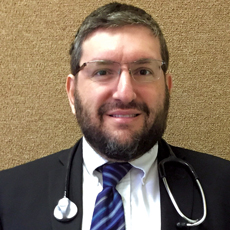
When people think of senior care organizations, they don’t typically think of cutting-edge technology. However, with the advent of new technologies, including sensors, health trackers, and applications aimed at seniors and their caregivers, the traditional ‘technology and geriatrics don’t mix’ paradigm is quickly changing.
I’ve been treating elderly patients for more than 15 years and am deeply passionate about new treatments and tools that can help improve health outcomes.
This is especially important with the growing aging population. Health insurers are seeking cost-effective alternatives to treat more individuals in their home rather than the hospital.
Today, the average U.S. nursing home has approximately 100 to 120 residents. Hebrew Home at of Riverdale by RiverSpring Health is unique in that we have more than 850 beds. Of these, 760 are long-term care patients with chronic medical conditions and approximately 90 are sub-acute patients from nearby hospitals. Our facility also has physicians on staff and provides in-house medical care around the clock. Nursing staff are vigilant for any acute changes in condition.
However, no matter how adept our nursing staff is, it is not possible for humans to monitor and detect subtle changes in heart rate and respiratory rates the way that advanced senor technologies do.
In 2010, our CEO, Dan Reingold and I were introduced to an innovative breakthrough technology that “invisibly” and accurately tracked patients with no wires. The solution aimed to assist medical teams in hospitals with early detection of significant patient changes of condition. Shortly thereafter, Hebrew Home became the first skilled nursing facility in America to adopt EarlySense.
Placed under a mattress or within a chair cushion, the sensor tracks heart rate, respiratory rate and physical activity. The “contact-free” technology is welcomed by our residents because it allows a greater degree of vital signs monitoring without the need for being attached to any wires.
Tracking these vital signs continuously can provide us with advanced warning of risk, patient pain or confusion. For our elderly patients, today’s cough is tomorrow’s bronchitis, which can quickly become pneumonia or sepsis. That’s why early detection is so crucial.
The earlier we can detect changes in patients, the sooner we can act. If a problem is recognized, we can begin treatment sooner and in some cases avoid the hospital altogether.
For example, one of our rehab patients was an 85-year-old man with lung cancer who had been hospitalized for weakness and other symptoms. He was treated with a drug for a heart arrhythmia. While being continuously monitored, the system alerted us of a high heart rate of 180-190 beats per minute, leading our medical team to recognize supraventricular tachycardia, a potentially dangerous rapid heart rate. As a result, we adjusted the patient’s medications to appropriately treat this condition, and successfully stabilized the patient in the skilled nursing facility. In the absence of this level of monitoring, it is likely that he would have been readmitted to the hospital.
Falls are also, unfortunately, a common occurrence in the geriatric population residing in the skilled nursing facility. However, the sensor detects and alerts us immediately if a resident is exhibiting increased activity in the bed or attempts to exit the bed. In this way, we have been able to significantly reduce the incidence of falls and prevent falls-related injuries. The system can also help prevent the development of pressure ulcers in patients that are bedbound, by notifying staff when to turn and reposition individuals.
I have seen first-hand that early detection – made possible by continuous monitoring – has significantly improved our quality of care and reduced our hospital admissions. I encourage facility managers and senior caregivers to consider how continuous monitoring can impact their own residents and loved ones.
When people visit our cutting-edge healthcare facility, they are impressed by the array of monitors and nurse displays, which are not obstructive to the residents or their families. We have seen an improvement in quality of care and patient outcomes with the use of this technology.
The bottom line is that advanced health monitoring solutions are no longer reserved for hospitals and professional treatment facilities. The technology is readily available, easy to use, and is clinically proven to improve outcomes. As we head into 2016 and beyond, continuous monitoring systems should be a high priority for any senior healthcare provider.
Zachary Palace, M.D., joined the medical staff of the Hebrew Home as a staff geriatrician in 2000, and was appointed Medical Director of the facility in 2006. He was recently awarded the AMDA Foundation 2015 Quality Improvement Health Outcomes Award.




